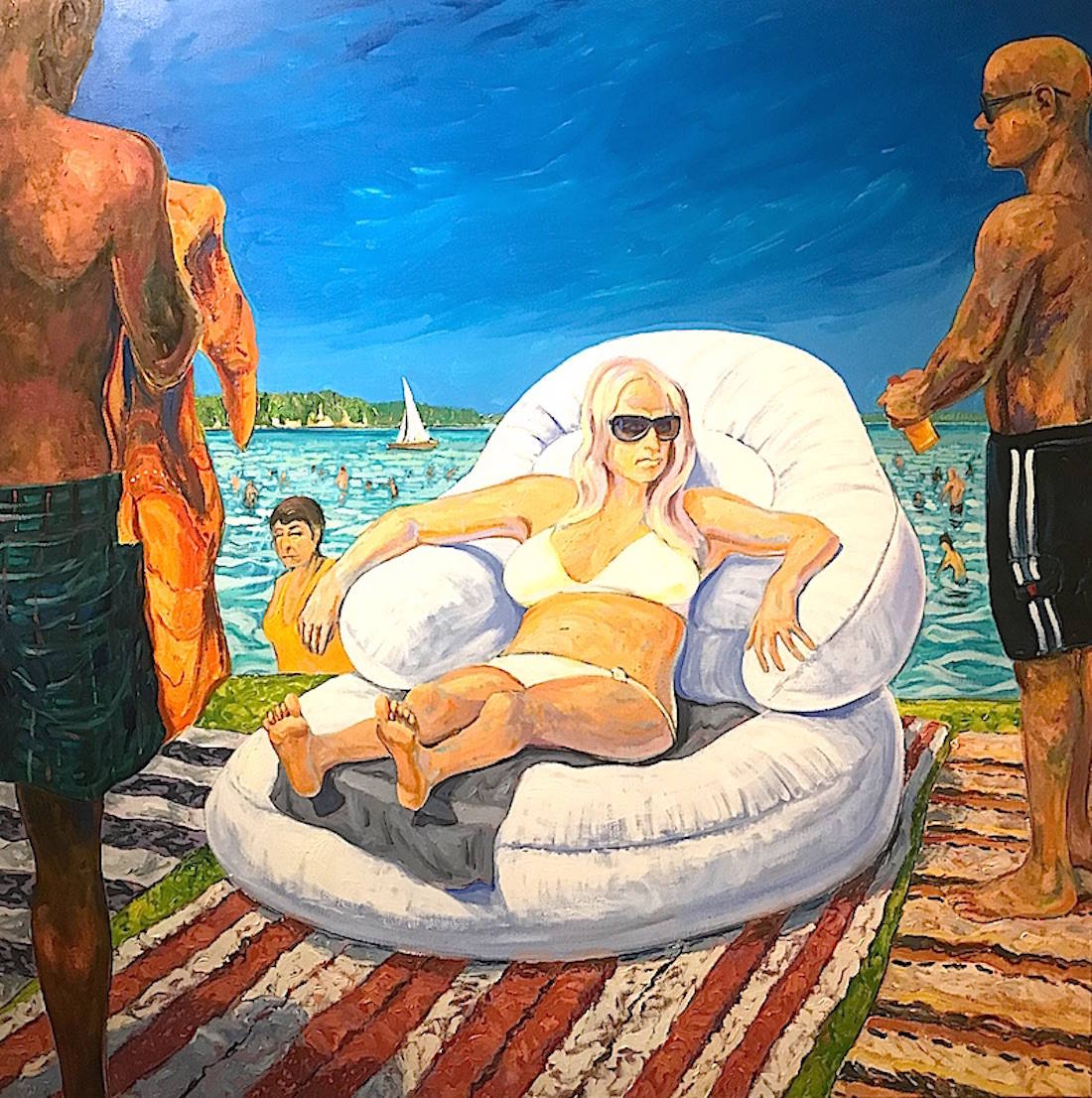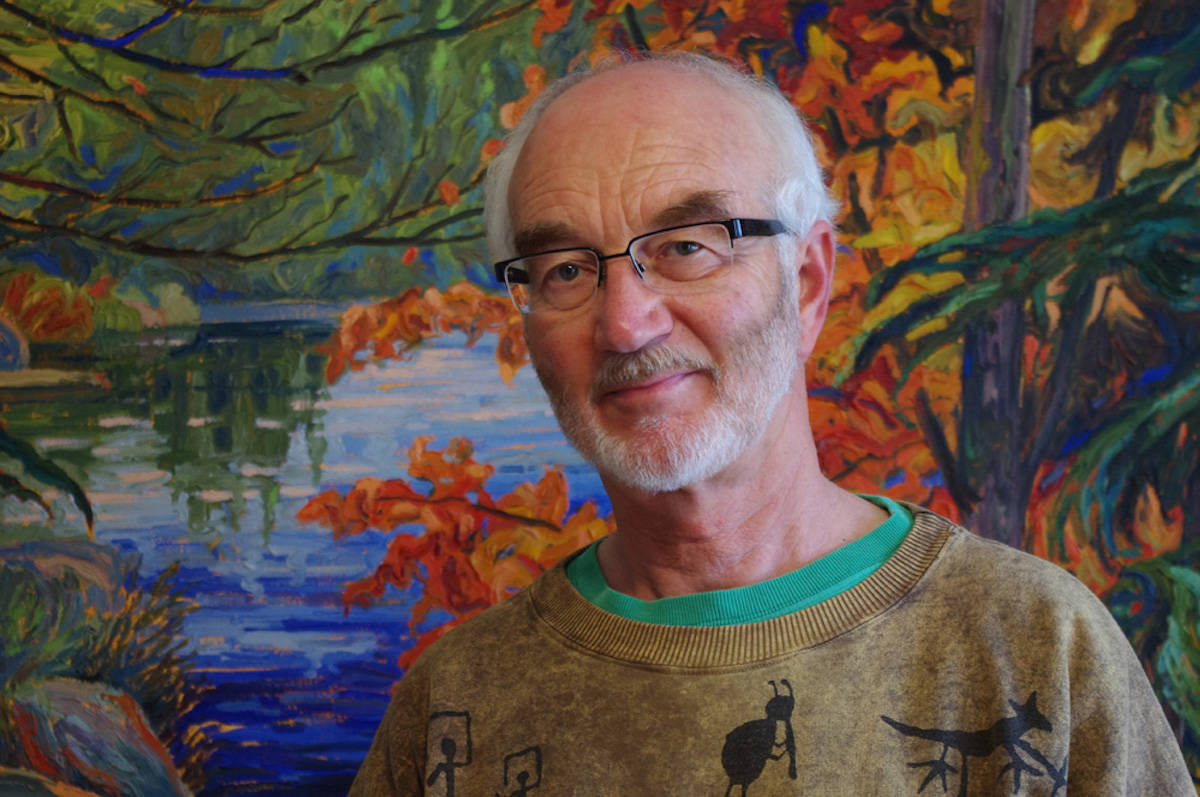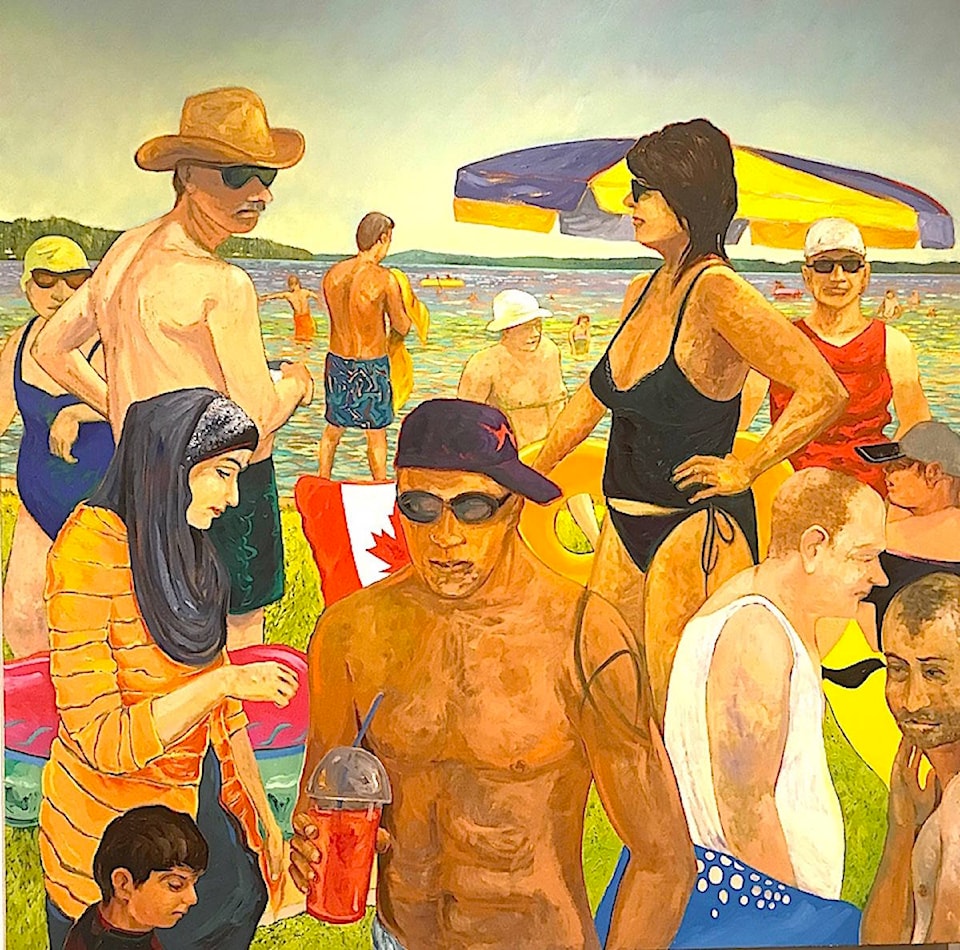David More’s latest paintings at the Red Deer Museum and Art Gallery offer a glimpse back at a carefree, pre-pandemic world.
Throngs of diverse beach-goers are shown crowding the shores of Sylvan Lake — people who are young and old and of different ethnic backgrounds are shown enjoying a sun-soaked day by the water.
“It’s almost ‘the good old days,’” muses More of his Shore Figures — Sylvan Lake exhibit, which is on until Sept. 5.
His most recent trips to Sylvan Lake tell a more subdued story. The Benalto artist knows the lake-side “carnival scenes” of the past have been suspended this summer, due to the physical distancing requirements to slow the spread of COVID-19.
Even on warmest days, crowds on the beach are sparser, as befits this worrisome era when local bylaws officers are tasked with ensuring two metres of spacing between parties.
For now, More admits the crush of humanity he has depicted in oils has to be a reminder of more “normal” times.
The artist’s seven Shore Figures paintings were inspired by decades of Sylvan Lake people-watching.
Although best known for landscape paintings, More says he has always been interested in the human form.“I’ve been taking pictures of people on the beach for 35 years because I was fascinated by the diversity” of the spectacle, adds the retired Red Deer College art instructor.
He believes beaches are a great equalizer.
More visited Rio de Janeiro “a long time ago,” and saw rich people coming down to the oceanside from their high-rises, and poor people travelling from their favela slums. The two groups would mingle by the water. And, clad in bathing suits, “you couldn’t tell one from the other,” he recalls.
More purposely combined figures from the various Sylvan Lake beach photographs he’s taken, “like actors on a stage,” to play up contrasts, and hint at various personalities and scenarios.
In his work Black and Red, a modest woman wearing a head scarf is shown standing next to a sunglasses-wearing cowboy with his torso exposed to the sun. In another, a bold, black-clad, mustachio-ed biker-type strides by a senior and his small grandchild.
More’s work The White Queen shows a woman in a white bikini lounging majestically on a white inflatable chair. She’s flanked by two male “attendants” — just as she was in real life, recalls the artist, who took a photo of a seated woman being catered to by two men. “I thought: She’s classic!” he says, with a chuckle.
To preserve the beach-goers’ anonymity, More didn’t attempt portraits of his subjects, but rather aimed to capture their general stances and attitudes.
But art history buffs will notice similarities between some of the positioned people in his works and those in Edouard Manet’s painting Luncheon on the Grass and Georges Seurat’s The Bathers. The Venus de Milo also inspired More’s Venus and the Biker painting.
By referencing the past, More hopes to make viewers consider that people are people, regardless of the century, and that life is a trajectory with the present mirroring and repeating what’s happened before.
As to when Sylvan Lake will get back to normal, with its usual stretch of bathers, More knows that will also happen again, but can’t guess when. “At this point it has to be a fond memory.”


